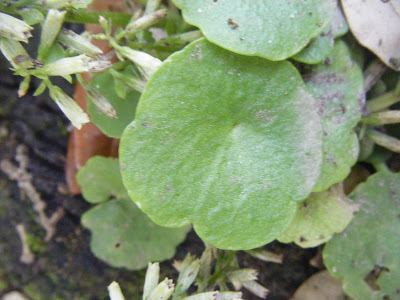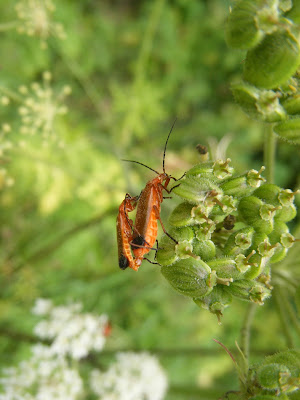The lycophytes (Lycopodiophyta) are a truly ancient division of plants. They have a long and extensive fossil record that includes some of the earliest known land plants. Lycophytes were a major component of Late Paleozoic flora and were prominent in the coal swamps of the Carboniferous period (Wikstrom and Kenrick, 2001 Molecular Phylogenetics and Evolution 19 pp. 177-186). Here, some species like Sigillaria grew to large tree forms that dominated the wetter environments (Wagner and Diez, 2007 Comptes Rendus Palevol 6 pp. 495-504).
Living lycophytes however only count for less than 1% of extant land plants and consist of three families - Isotaceae (quillworts), Selaginellales (spike mosses) and Lycopodiaceae (clubmosses). These are small creeping plants with branching stems and simple leaves that possess a microphyll, a single vascular vein (Stace, 1999 Field Flora of the British Isles p. 6). Therefore, though some species are superficially similar to mosses (hence the suffixes in the common names), they are the oldest living vascular plants. Strikingly, living species are very similar morphologically to the earliest fossils (Heuber, 1992 Annals of the Missouri Botanical Garden 79 pp. 474–499).
Lycophytes show a similar reproductive strategy to the Pteridophytes, producing spores (either homosporous or heterosporous) in leaf axils or on the upper side of leaf near its base. The sporangia bearing leaves are often collected into strobili (cones). As in ferns, the sporophyte generation is dominant while the gametophyte generation is either free-living, subterranean, mycorrhizal and saprophytic (homosporous) or much reduced and retained within the spore (heterosporous) on the ground (Stace, 1999 Field Flora of the British Isles p. 6).
 Krauss's Clubmoss, Selaginella kraussiana
Krauss's Clubmoss, Selaginella kraussianaAn interesting naturalised alien lycophyte in Ireland is Krauss's Clubmoss, Selaginella kraussiana (actually a spike moss). Krauss's Clubmoss is a native of the Azores, Madeira, the Canary Islands and South Africa and was introduced to Ireland as ground cover (O'Mahony, 2009 Wildflowers of Cork City and County pp. 333-334). It has a moss like appearance, with a flattened shape and apically forking fronds. In shaded areas S. kraussiana can become the dominant ground cover and its presence near waterways, combined to its ability to reproduce vegetatively, points to its potential as a problematic weed in Ireland, as is the case currently in New Zealand (Roy, 2008 An Illustrated Guide to Common Weeds of New Zealand).

















